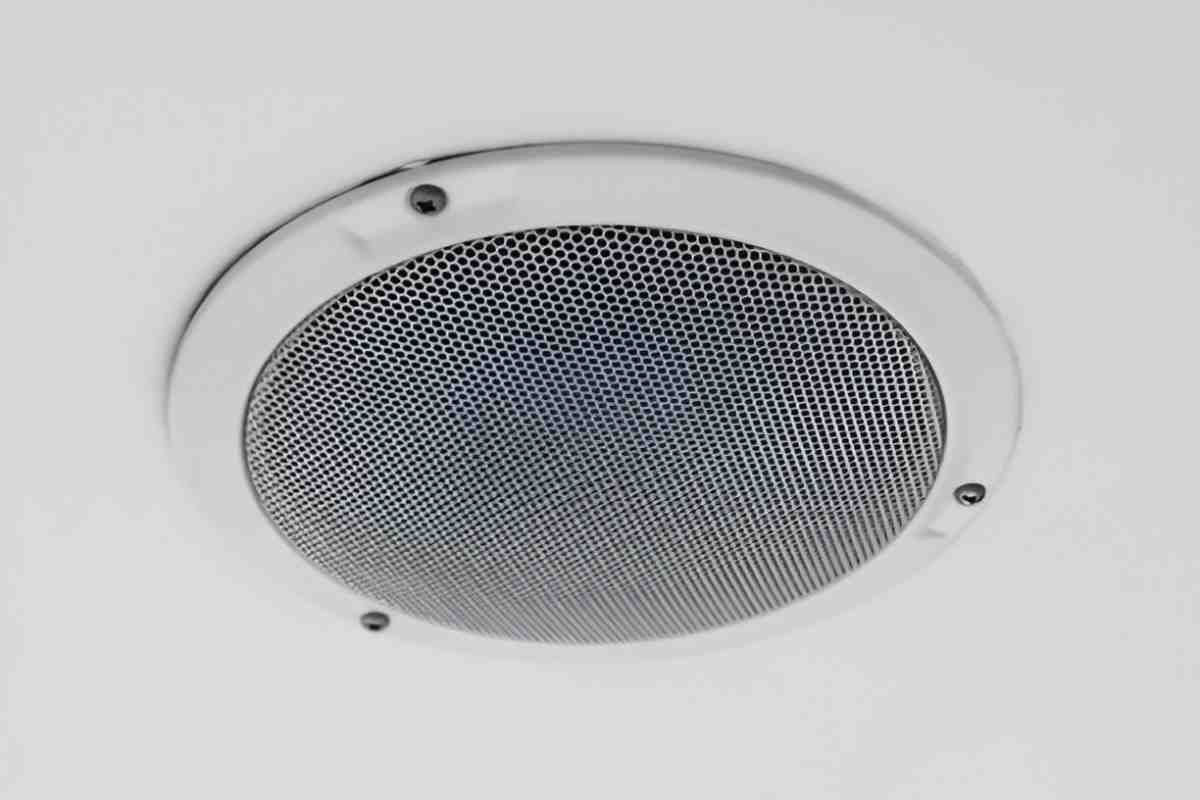When I first decided to invest in ceiling speakers, I felt a little overwhelmed. There are so many options, each with various features, prices, and specifications. I quickly realized that selecting the right ceiling speakers goes beyond just picking the most popular model or the one with the best reviews. It involves considering a range of factors that will affect your audio experience, installation process, and long-term satisfaction. In this guide, I will walk you through everything I’ve learned about choosing ceiling speakers, from sound quality to ease of installation, and help you make an informed decision.
Table of Contents
1. What Are Ceiling Speakers?
Ceiling speakers, as the name suggests, are audio speakers designed to be mounted in the ceiling. They are often used for whole-home audio systems, home theaters, or multi-room audio setups. Unlike traditional floor-standing or bookshelf speakers, ceiling speakers are hidden from view, providing a clean, unobtrusive look. They’re ideal for people who want high-quality sound without cluttering their space with visible speakers.
2. Why Choose Ceiling Speakers?
I chose ceiling speakers for several reasons:
- Space-Saving Design: They offer excellent sound without taking up valuable space on shelves, tables, or floors.
- Sleek Appearance: Ceiling speakers blend into the ceiling, making them ideal for minimalistic interiors.
- Better Sound Distribution: Ceiling speakers can provide more even sound distribution throughout a room, especially if you have a large open area.
- Perfect for Home Theaters: Ceiling speakers can also be used for immersive surround sound setups, allowing you to enjoy the full experience without bulky equipment.
3. Factors to Consider When Choosing Ceiling Speakers
When I was shopping for ceiling speakers, I had to consider several key factors. Here’s what I learned:
3.1. Sound Quality
Sound quality should always be your top priority. Ceiling speakers are often installed in places where sound may not always be ideal, so you’ll want a speaker that produces clear, balanced sound. I recommend looking for speakers that have good frequency response, meaning they can cover both the low bass and the higher treble frequencies clearly.
Here’s what I kept in mind for sound quality:
- Frequency Response: A wide frequency range ensures the speaker can reproduce both low and high-end sounds clearly.
- Impedance: A speaker’s impedance affects the power it draws from the amplifier. I found that 8-ohm impedance is standard for most home audio systems.
- Power Handling: A speaker’s power handling capability determines how loud it can go without distortion. Higher wattage means louder and clearer sound at higher volumes.
3.2. Installation
Installation can be a bit tricky, but it’s not something to shy away from if you’re prepared. I found that ease of installation depends largely on the design of the speaker and the space in your ceiling. Some ceiling speakers are designed to be easy to install, while others may require more advanced skills.
- Mounting Mechanism: Some ceiling speakers come with a built-in mounting system that makes installation easier, while others may require additional hardware.
- Cutout Size: It’s important to check the size of the hole that needs to be cut in the ceiling. I found that some models come with templates to make the cutting process easier.
- Professional Installation: If you’re unsure about the installation process, you may want to consider hiring a professional to ensure everything is mounted securely.
3.3. Speaker Size and Type
Ceiling speakers come in different sizes, and I realized the size will affect both the sound and the ease of installation. Larger speakers generally deliver more powerful sound but may require a larger space in the ceiling. Smaller speakers might be more suited for smaller rooms or when you have limited space.
Here’s a quick breakdown of typical speaker sizes and their uses:
| Speaker Size | Typical Use | Sound Characteristics |
|---|---|---|
| 4 to 5 inches | Small rooms or individual zones | Clear, bright sound but lacks deep bass |
| 6 to 6.5 inches | Medium-sized rooms | Balanced sound with good bass response |
| 8 inches | Large rooms or home theaters | Deep bass, louder volume, and full-range sound |
I found that for most home setups, 6 to 6.5-inch speakers provided the best balance of sound quality and ease of installation.
3.4. Budget
As with any product, your budget will play a significant role in your decision-making process. Ceiling speakers can vary widely in price, with basic models starting at around $50 and high-end systems reaching several hundred dollars.
Here’s a rough guide to what you can expect at different price points:
| Price Range | Speaker Quality | Ideal For |
|---|---|---|
| Under $100 | Basic, budget models with limited features | Small rooms or casual listening |
| $100 to $300 | Mid-range models with better sound quality | Home theater setups or larger rooms |
| Over $300 | High-end models with premium sound quality | Audiophiles and high-end systems |
3.5. Brand Reputation and Reviews
I found that when choosing ceiling speakers, it’s helpful to consider the reputation of the brand. Trusted brands tend to offer more reliable products, better sound quality, and excellent customer service. I also spent time reading reviews from other users to gauge the performance and durability of the speakers I was considering.
4. Types of Ceiling Speakers
Ceiling speakers are available in different configurations, and it’s important to know which type will suit your needs best.
4.1. Passive vs. Powered Speakers
- Passive Speakers: These require an external amplifier to power them. I preferred passive speakers because they allow for more flexibility in terms of power and integration with home audio systems.
- Powered Speakers: These come with a built-in amplifier, meaning they don’t need an external one. If you’re looking for simplicity and don’t want to worry about extra gear, powered speakers may be the right choice.
4.2. Full-Range vs. Dedicated Subwoofers
- Full-Range Speakers: These are designed to handle all frequencies, from low bass to high treble. They are ideal for general use and provide a balanced sound.
- Dedicated Subwoofers: If you want deep, powerful bass, you can opt for a dedicated subwoofer. Subwoofers can be added alongside full-range speakers to enhance low-end sound.
5. Comparing Popular Ceiling Speakers
To help narrow down my options, I compared a few popular ceiling speakers based on the factors I discussed earlier. Below is a comparison table of some of the top-rated models.
| Speaker Model | Size | Power Handling | Impedance | Frequency Response | Price |
|---|---|---|---|---|---|
| Polk Audio RC80i | 8 inches | 100W | 8 ohms | 40Hz – 20kHz | $129.99 |
| Yamaha NS-IW480C | 6.5 inches | 120W | 8 ohms | 60Hz – 20kHz | $179.99 |
| Klipsch CDT-5800-C II | 8 inches | 100W | 8 ohms | 50Hz – 20kHz | $279.99 |
| Sonos In-Ceiling | 6.5 inches | 120W | 8 ohms | 45Hz – 20kHz | $499.00 |
6. Final Thoughts
Choosing the best ceiling speakers really comes down to understanding your space, your budget, and your specific needs. Whether you’re outfitting a home theater, filling a room with music, or simply trying to add discreet sound to your living space, the right ceiling speakers can make a world of difference. For me, balancing sound quality, ease of installation, and price was key.
I recommend thinking about where and how you’ll use the speakers, as well as what type of sound experience you’re hoping to achieve. From there, consider factors like the speaker’s size, impedance, and frequency response. Don’t forget about installation—make sure you feel comfortable with the process or have a professional handle it if needed.
With the right information, I’m confident you’ll be able to find ceiling speakers that perfectly meet your needs.





